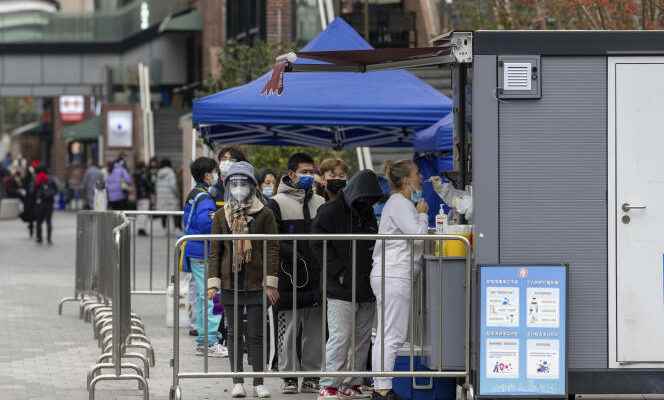After three years of patient construction, the sanitary dam put in place by the Chinese government against Covid-19 has finally given way. And the Omicron variant risks taking everything in its path. In Beijing, until mid-November, the virus remained a marginal phenomenon. Since then, cases have multiplied at breakneck speed.
The systematic screening policy having been abandoned on December 7, no more public data is credible. But a survey published on December 15 by the journal The Beijinger among 3,000 expatriates in the capital indicates that 9% of them had Covid-19 before 1er December, 58% since that date and only 33% have not caught it. Of those who tested positive, 30% had only mild symptoms, 52% moderate and 14% severe or very severe. These numbers seem believable.
Many clues suggest that negative people are now a minority among the 22 million Beijingers. At the door of certain residences, the number of guards fell by 75% in a few days. A district of Beijing, Fengtai, asks residents in good health and vaccinated to volunteer to make up for the missing couriers, who have become essential in this ghost town where everyone remains cloistered at home and does their shopping online.
“A Hardly Believable Change”
Cathy Niu was infected on December 11. “We are 2,000 employees in my company, and 90% have already been infected. In my team of fifteen, only two went to the office today, the others are working remotely, explains this Pekingese who works in a marketing company. You need a PCR test to get into our building, but even those who test negative prefer to avoid the office these days. »
In one week, everything changed: “As people have tested positive in the workplace, only those keep coming. Negative people stay at home. It’s a barely believable change.” testifies a Chinese employee of a public company. In Beijing, where schools only operate remotely, “40% of students have a mark on their forehead indicating that they have a fever”, testifies a mother. And not all of them attend classes.
If hospitals seem to be holding up, the number of people placed in intensive care increased by 37% between December 12 and 15. On Friday, staff at some crematoriums in Beijing said they were working around the clock to keep up with demand. According to the Radio Free Asia website, an employee of the Dongfeng hospital estimates that due to the number of positive employees and the increase in the number of deaths, families must wait five to seven days for the cremation of the deceased. However, according to the official count, the last death due to Covid-19 in the country dates back to December 3.
You have 62.16% of this article left to read. The following is for subscribers only.
